Le studio interactif se propose d’explorer l’art numérique et interactif. http://lestudiointeractif.tumblr.com
Don't wanna be here? Send us removal request.
Photo


リコーダー奏者の鈴木俊哉氏によるゲスト講演が10月9日に行われます。鈴木俊哉氏と弦楽四重奏のために、既に多くの作品が著名な作曲家により書かれました。そのレパートリの作品解説、演奏形態などについて講義をしていただきます。ちなみに2019年2月19日に東京芸術大学、音楽環境創造科にて、同演奏家による、学生達の作品も含む新曲発表のためのワークショップ+演奏会が行われます。この作品では人工知能と作曲の試みが行われます。
タイトル:「リコーダーと弦楽四重奏」 日時: 2018年10月9日、14時40より 場所: 東京芸術大学 音楽環境創造科 千住キャンパス、第2講義室 〒120-0034 東京都足立区千住1-25-1 http://www.geidai.ac.jp/access/senju お問い合わせ: Tel: 050-5525-2742 Email: [email protected]
講義概要: リコーダーの歴史において最盛期であるバロック時代、ヴィヴァルディを頂点に「リコーダーと弦楽四重奏(通奏低音)」の編成で数々の傑作が生まれました。それを踏まえて、21世紀の新たな視点で作曲するにあたって、その可能性、問題点、意義等についての話をします。
鈴木俊哉 Tosiya Suzuki
アムステルダム音楽院卒業。リコーダーを花岡和生、W.ファン・ハウヴェに師事。リコーダーの可能性と技術の開拓に 取り組む。L.コーリ、B.ファーニホウ、L.フランチェスコーニ、原田敬子、細川俊夫、伊藤弘之、野平一郎、S.シャリーノ、湯浅譲二といった作曲家たちと共同作業をおこない、彼等の作品を初演す る。ウィーンモデルン、チューリッヒ新音楽の日、ガウデアムス、ダルムシュタット、ISCM世界音楽の日々、秋吉台、パリの秋、武生、ロワイヨモン、コンポージアム、ヨーロッパ・アジア国際現代音楽祭、クランクシュプーレン、トンヨン、フェスティバル・ア・テンポ、メルボルンR.C.オープニングフェスティバル、ルー��ニア国際現代音楽祭、アジアーゴ音楽祭、サントリーサマーフェスティバル、中国-アジア音楽週間、ニュージーランド・フェスティバル、Etching Festival、Melos-Ethos Festival等の音楽祭にソリストとして参加。ヨーロッパ、アメリカ、アジア各地で現代奏法に関するワーク ショップやリサイタルを行う。’02年のダルムシュタット夏期講習会講師。東京都交響楽団、セントラル愛知交響楽団等と共演。また、京都府教育委員会の派遣講師「夢大使」として子供たちにもリコーダーを教え、京都府の各小学校だけでなく、国内や台湾の小中学校でも教える。ソロCD 「Tosiya Suzuki Recorder Recital」はドイツの音楽ジャーナル、音楽と美学協会よりMusic & Ästhetik Interpretationsprize 2003を受賞。他に、名古屋市民芸術祭賞、ダルムシュタット奨学生賞、クラーニッヒシュタイナー音楽賞、中島健蔵音楽賞、創造する伝統賞、佐治敬三賞を受賞。エリザベト音楽大学特別講師。 www.tosiyasuzuki.com/
1 note
·
View note
Photo

ヴァイオリン奏者の亀井庸州氏のゲスト講演が10月2日に行われます。
タイトル:「ヴァイオリンの歴史的背景、音響原理的側面から捉えた現代的使用法の再考」 日時: 2018年10月2日、14時より 場所: 場所: 東京芸術大学 音楽環境創造科 千住キャンパス、第1講義室 〒120-0034 東京都足立区千住1-25-1 http://www.geidai.ac.jp/access/senju お問い合わせ: Tel: 050-5525-2742 Email: [email protected]
概要と略歴は以下を参照してください。
講義概要: 現代のヴァイオリン奏法、および特殊奏法は、基本的に近代または20世紀以降に成立した楽器理念によるものが主である。本講義では、そもそもヴァイオリンが成立した17世紀ごろの社会通念から、現代を通しての楽器理念、音響構造を再認識することで、音響体としてのヴァイオリンを、現代の作曲においてさらに適切に取り扱う事を目的とする。
亀井庸州 5歳よりヴァイオリンを始める。2005年よりベルギー王立リエージュ音楽院において、ジャン=ピエール・プーヴィオン、ギャレット・リスト、大久保泉らのもとで欧州の20世紀音楽や即興演奏を学んだほか、各氏とは欧州各都市にて共演。また、2006年と07年にはナミュール国際古楽器講習会に参加し、バロックヴァイオリンの演奏を修得している。2007年より拠点を日本へ移したのちは、引き続き同世代の作品初演活動に携わる。オペラシティコンポージアムシリーズ、サントリーサマーフェスティバル、みなとみらいホールJustComposedシリーズ、武生国際音楽祭などへ出演し、内外の作曲家による室内楽、ソロ作品の初演、再演を中心として活動している。これまでに初演した作品は100曲あまり。また尺八の演奏として、古典本曲の研鑽を中心に、スタジオワークスやオリジナルアレンジなどでの演奏も行なっている。弦楽四重奏として携わった鈴木俊哉リコーダーリサイタルにおいて第14回佐治敬三賞を受賞。これまでにヴァイオリンを七沢清貴、荒井英治、大久保泉、尺八を横山勝也、柿堺香の各氏に師事。
1 note
·
View note
Text
IRCAMのジェラール・アサヤグ(Gerard Assayag)のゲスト講演が4月10日に行われます。

IRCAMのジェラール・アサヤグ(Gerard Assayag)のゲスト講演が4月10日に行われます。
タイトル: クリエイティブ・エージェントとのシンボリック・インタラクション 日時: 2018年4月10日、18時より 場所: 場所: 東京芸術大学 音楽環境創造科 千住キャンパス、第1講義室 〒120-0034 東京都足立区千住1-25-1 http://www.geidai.ac.jp/access/senju お問い合わせ: Tel: 050-5525-2742 Email: [email protected] *講義は日本語訳されます。
IRCAMのGerard Assayagが率いるミュージック・レプレゼンテーション・チームが開発した、 OpenMusic(作曲のためのビジュアル・プログラミング言語)そしてOMax(インタラクティブな人工即興演奏家)をもとに講演が行われます。 https://ja.wikipedia.org/wiki/OpenMusic http://repmus.ircam.fr/omax/home 概要と略歴は以下を参照してください。
Abstract
Symbolic Interaction with Creative Agents
Gerard Assayag IRCAM (Institut de recherche et de coordination acoustique / musique), Paris
The Music Representation Team originated at IRCAM by Gerard Assayag has issued several software environments that have become internationally renowned among contemporary music creators, such as OpenMusic, a visual programming language for composition, or OMax, an interactive artificial improviser. Gerard Assayag has eventually defined with his team the concept of symbolic interaction in order to account for a rich and versatile musical dialog between machines and human, spanning over several levels of information from acoustics signal to the higher symbolic integration frame skilled musicians are used to. In order to foster realistic and artistically interesting behaviors of digital interactive systems, and communicate with them in a humanized way, we show how to bring into synergy a combination of means: machine listening — extracting high level features from the signal and turning them into significant symbolic units ; AI and interactive machine learning — discovering and assimilating on the fly intelligent schemes by listening to actual performers ; stylistic simulation— elaborating a consistent model of style ; symbolic music representation — formalized representations connected to organized musical thinking, analysis and composition. All these means cooperate in order to elaborate a multi-dimensional and multi-scale memory model underlying a discovery and learning process, thus contributing to the emergence of creative musical agents. Creative Symbolic Interaction brings indeed together both the advantages one can get from the worlds of real-time signal computing, and from intelligent, content-level analysis and processing, in order to enhance and humanize man-machine communication. Performers improvising along with Symbolic Interaction systems experiment a unique artistic situation where they interact with a musical agent which develops itself in its own ways while keeping in style with the user. It aims at defining a new artificial creativity paradigm in computer music, and extends to other fields as well : The idea to bring together composition and improvisation through modeling cognitive structures and processes is a general idea that makes sense in many artistic and non-artistic domains. It corresponds to a decision-making paradigm where a possible strategy consists in weaving decisions step after step, by relating to an overall structural determinism, by listening closely to oneself or to the external environment, or by jumping in an "improvized" way and generate surprises. This kind of "improvisation" strategy is observed in the living world, and might be one aspect of intelligence as a way to cope effectively with the unknow ; it may well serve as a productive model for artificial music creativity.
Bio
Gerard Assayag has been until recently head of IRCAM Research Lab, the STMS (Sciences and Technologies of Music and Sound) Lab, and he is currently head of the IRCAM Music Representation Team that he has founded in 1992. His research interests are centered on music representation issues, including programming language, machine learning, constraint and visual programming, computational musicology, music modeling, and computer-assisted composition. He has designed with his collaborators OpenMusic and OMax, two powerful music research software environments which have gained international reputation and are used in many places around the world for computer assisted composition, analysis and improvisation. Gérard Assayag is a founding member of AFIM (Association Francaise d'Informatique Musicale) and SMCM (Society for Mathematics and Computation in Music). He serves in the Editorial Boards of Journal of Mathematics and of the Journal of New Music Research (JNMR). He has organized or co-organised the "Forum Diderot, Mathematique et Musique" for the European Mathematical Society in 1999 as well as several international computer music conferences, including the Sound and Music Computing 2004 conference, the 3rd Mathematics and Computation in Music conference in 2011 and the Improtech Paris - New York 2012 and ImproTech Paris-Philadelphia 2017 conference on Improvisation an new technologies, the Mathemusical Conversation Intl Workshop in Singapour in 2015. Gerard Assayag has been co-editor of several journal special issues on music science such as JNMR or Soft Computing, and of books including «Mathematic and Music » (Springer-Verlag 1999), «The OM Composer's Book I, II & III» (Delatour 2008-2016), «New Computational Paradigms for Computer Music » (Delatour 2009), «Constraint Programming in Music » (Wiley 2012), « Mathemusical Conversations » (World Scientific 2016).
1 note
·
View note
Text
Conference“Musical Interfaces and Robotics”
Conference
“Musical Interfaces and Robotics”
Date: November 27, 2017, 13:00-
Place: Conference Room 2 (1st floor), Tokyo University of the Arts, Department of Musical Creativity and the Environment
Address: 1 Chome-25-1 Senju, Adachi, Tokyo 120-0034, Japan
Telephone: +81 50-5525-2742
http://www.geidai.ac.jp/access/senju
Email: [email protected]
Participants:
Frédéric Bevilacqua (IRCAM)
Jean-Marc Pelletier (Nagoya Zokei University)
Kenjiro Matsuo (Invisible Designs Lab)
Shigeyuki Hirai (Kyoto Sangyo University)
Suguru Goto (Tokyo University of the Arts)
Yoichi Nagashima (Shizuoka University of Art and Culture)
(Alphabetical order)
Theme:
The conference intends to present the research and the latest development of musical interfaces and robots for musical instruments. The musical interfaces refer to the development of interactive systems for sound and music, which are based upon sensors and others in order to capture gesture and movement in real time. These also relate with Programming, such as Mapping Interfaces and Gesture Followers, as well as some applications of Media Arts. The robots for musical instruments mean automated instruments, which are performed by motors and controlled by a computer. This conference much tends to present in non-academic style and to discuss about the latest issue and the future perspective.
Descriptions:
Frédéric Bevilacqua
“Designing Sound Movement Interaction: Models, Mapping and Interfaces”
I will present the research performed by the Sound Music Movement Interaction team at IRCAM in Paris. Our research and applications concern the development of interactive systems for sound and music, and more specifically systems allowing for gesture and movement interaction. Various tangible interfaces, such as the Modular Musical Objects have been developed, along with methods to map movement to sound. In particular, we make use of interactive machine learning techniques for continuous motion recognition and mapping such as Gesture Follower, or more recently the XMM library (by Jules Françoise). Recently, we have also experimented with systems enabling collective interaction using smartphones (CoSiMa and Rapid-Mix projects). Many applications will be presented, mainly related to music and performing arts.
Links
http://ismm.ircam.fr/
http://frederic-bevilacqua.net/
Videos
Modular Musical Objects
https://youtu.be/Uhps_U2E9OM
Urban Musical Game
https://vimeo.com/63974506
Mapping by Demonstration
https://vimeo.com/87684482
Biography
Frédéric Bevilacqua is the head of the Sound Music Movement Interaction team at IRCAM in Paris (part of the joint research lab Science & Technology for Music and Sound – IRCAM – CNRS – Université Pierre et Marie Curie). His research concerns the modeling and the design of interaction between movement and sound, and the development of gesture-based interactive systems. He holds a master degree in physics and a Ph.D. in Biomedical Optics from EPFL (Switzerland). In From 1999 to 2003 he was a researcher at the University of California Irvine. In 2003 he joined IRCAM as a researcher on gesture analysis for music and performing arts. He was keynote or invited speaker at several international conferences such as the ACM TEI’13. As the coordinator of the “Interlude project”, he was awarded in 2011 the 1st Prize of the Guthman Musical Instrument Competition (Georgia Tech) and received the award “prix ANR du Numérique” from the French National Research Agency (category Societal Impact, 2013).



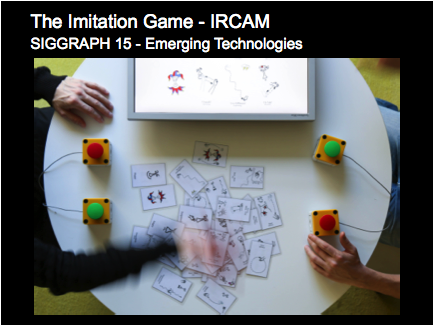
Jean-Marc Pelletier
Title: Audio-visual Congruence Effects and Music Design
Summary: Certain associations of sounds and visuals appear to many as more "natural" than others. From these interactions, we can isolate a number of principles to guide the design of musical tools and performances.
Bio: Assistant professor at Nagoya Zokei University. Based in Japan since 1999, my research interests span from interfaces for musical expression to game design.
Link: http://jmpelletier.com

Kenjiro Matsuo
CEO of Sound Art Unit invisible designs lab a.k.a dir
“New point of view for music and sound”
"Expand Music" is the concept of them. Presentation will be mainly about “Z-machines project”. How did them work for playing musical instruments etc.
https://www.youtube.com/watch?v=VkUq4sO4LQM
https://wired.jp/2014/04/19/squarepusher-robot-music/
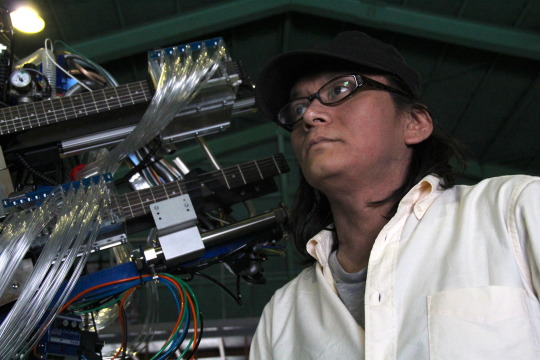
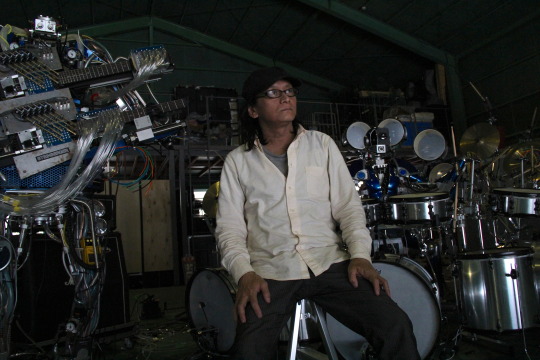
Shigeyuki Hirai
Title:
Interactive Sound and Music Systems for Everyday Life
Abstract:
In this talk, the research project for the future of a smart house with various sensors and displays in Kyoto Sangyo University will be presented. The features of the research are functions of interactive sonification and/or playable environments as musical instruments in everyday life. Especially, this project deals with practical and useful systems developed for Japanese bathroom. For instance, Bathonify which is an interactive sonification system representing a bather's state with motions or vital signs in a bathtub, TubTouch and RapTapBath those have embedded sensors inside of a bathtub edge to work as a controller with various sound and music applications, and so on. Through this presentation, the possibilities and issues of facilities with incorporating interactive sound and music for everyday life are discussed.
Biography:
Shigeyuki Hirai is an Associate Professor in Faculty of Computer Science and Engineering at Kyoto Sangyo University. Prior to the present affiliation, he was a system engineer at OGIS-RI Co., Ltd. and a researcher at KRI Inc. He received Ph.D. degrees in engineering from Osaka University in 2002. His research interests are HCI, entertainment computing and music computing. For these fifteen years, he has worked in interactive systems for everyday life, especially research and development of smart house for Japanese life style with sound stuff. He is the member of ACM, IPSJ, IEICE, Human Interface Society and The Society for Art and Science.
http://www.cc.kyoto-su.ac.jp/~hirai/index-e.html
- http://hir.ai/
- http://ubiqmedia.cse.kyoto-su.ac.jp/?page_id=68
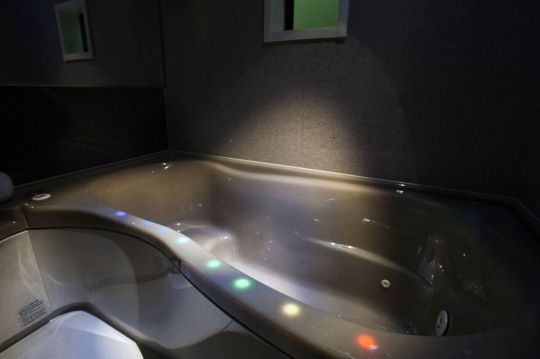
Suguru Goto
“My robot works for music and my sensor-based performance “
A public: « why are you making a robot for music? »
Me: « I want to go beyond the limit that an human player can do. »
A public: « Yeah, sure. The robot can eternally play any music without any complains and without any fees, hum? (Sniff) »
Me: « Having gone beyond the limit of human, I would like to be able to listen to music that I have never listened. »
A public: « Well, you know. A robot does not have any emotion and any feeling. »
Me: « The emotion and the feeling belong to music itself. A robot may possess intelligence to perform music with expression. Human thinks that they are too important to accept these, thus they do not share the emotion of music, when it is performed by non-human ».
A public: « You seem to have watched too many Scientific Fiction movies. »
Me: « HAL is not the story in future. It has been already realized. »
A public: « I’d prefer to go to a concert of warm and tasty music by human. »
Me: « What is the warm and tasty music? As I think more about music, I do not know even what is really the definition of music. »
A public: « Well, I do not know neither. But don’t you want to listen to good music? »
Me: « Certainly. But it is not a matter who plays and composes it. »
A public: « So that a robot is no longer a servant for human? That sounds great. (Sniff) »
Me: « In fact, as I work more robots, I appreciate more the complexities of human. However, I have never thought that a robot is a replacement of human. Human is too much used to the customs and traditions. I rather expect that a robot can do something different from human. That is to say a new art form."
Suguru Goto is a media artist, an inventor and a performer and he is considered one of the most innovative and the mouthpiece of a new generation of Japanese artists.
http://sugurugoto.com
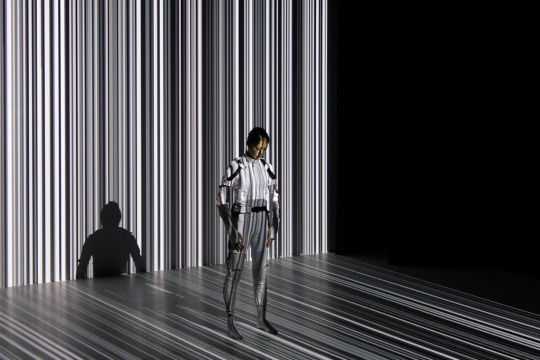
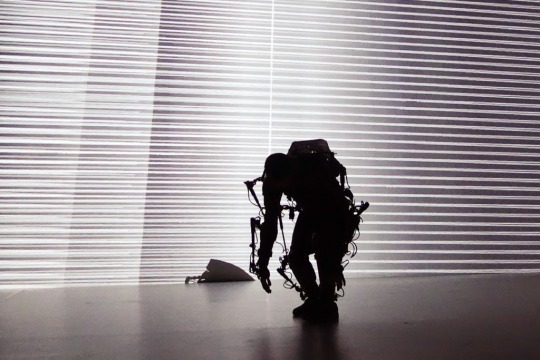
Yoichi Nagashima
Bio-Sensing and Bio-Feedback Interfaces
The brief summery of presentation
I will report (with short demonstration performance) about new instruments applied by biological information sensing, biofeedback and multi-channel tactile sensors. Recently I developed three projects - (1) a new EMG sensor "Myo" customized to be used as double sensors, (2) a new brain sensor "Muse" customized to be used by OSC, and (3) an originally developed "MRTI (Multi Rubbing Tactile Instrument)" with 10 tactile sensors. The key concept is BioFeedback which has been receiving attention about the relation with emotion and interception in neuroscience recently.
The commercialized sensors "Myo" and "Muse" are useful for regular consumers. However, we cannot use them as new interfaces for musical expression because they have a number of problems and limitations. I have analyzed them, and developed them for interactive music. The "DoubleMyo" is developed with an original tool in order to use two "Myo" at the same time, in order to inhibit the "sleep mode" for live performance on stage, and in order to communicate via OSC. The "MuseOSC" is developed with an original tool in order to receive four channels of the brain-wave, and 3-D vectors of the head.
Even though not dealing the direct bio-signals, the tactile sensor is very interesting / important for human sensing. The "RT corporation" in Japan released the "PAW sensor" which is a small PCB (size 21.5mm * 25.0mm, weight 1.5g) with a large cylinder of urethane foam on it. The output information of this sensor is four channel voltages which is time-shared conversion, which means the nuances of rubbing / touching the urethane foam by fingers. Then, I developed a system to use 10 "PAW sensors" with egg-shaped plastic container for ten fingers. The performer can control ten fingers by rubbing tactile action, and a total of 16 parameters from the PAW sensors are realtime mapped - to generate four voices by formant synthesis algorithm and - to generate realtime Open-GL graphics by fractal algorithm.
Biography
Yoichi Nagashima, composer/researcher/PE, was born in 1958 in Japan. He learned and played some instruments: violin, recorder, guitar, keyboards, electric bass, drums, and vocal/choral music. He was the conductor of Kyoto University Choir and composed over 100 choral music, and studied nuclear physics there. As the engineer of Kawai Musical Instruments, he developed some sound generator LSIs, and designed some electronic musical instruments, and produced musical softwares. From 1991, He has been the director of "Art & Science Laboratory" in Japan Hamamatsu, produces many interactive tools of real-time music performance with sensor/MIDI, cooperates some researchers and composers, and composes experimentally pieces. He is also a key-member of Japanese computer music community. From 2000, he has been also the associate professor at SUAC(Shizuoka University of Art and Culture), Faculty of Design, Department of Art and Science, and teaches multi-media, computer music and media-art. As a composer of computer music, he collaborates many musicians in his composition: Piano, Organ, Percussion, Vocal, Flute, Sho, Koto, Shakuhachi, Dance, etc. In 2004, he organized and was the General Chair of NIME04, and he became the associate professor of master course of SUAC. He became the professor on April 2007. He supported over 120 works and projects of interactive/multimedia installations from 2000, composed/performed many works of computer music, and organized/performed many lectures/workshops in many places all over the world.
http://nagasm.org/ASL/TUA2017/index.html


0 notes
Photo

ニコラ・ベルニエ (NICOLAS BERNIER)のレクチャーが東京芸術大学 音楽環境創造科にて行われます。詳細は以下を参照してください。ニコラ・ベルニエ (NICOLAS BERNIER)は11月3日、Mutekのパフォーマンスのために来日する予定です。
http://mutek.jp/?eventime_speakers=en-nicolas-bernier
特別講義 ニコラ・ベルニエ 日時: 2017年11月1日 18時 場所: 東京芸術大学 音楽環境創造科 スタジオA 〒120-0034 東京都足立区千住1-25-1 http://www.geidai.ac.jp/access/senju
お問い合わせ: Tel: 050-5525-2742 Email: [email protected]
参加費: 無料
レクチャーは英語で行われ通訳されます。
Sound / Material : Audiomateriality towards a poetic of science 音から物質構成へと通じ、それら二つがオーディオマテリアル作品と見られうるものへと合併される芸術的アプローチについてのアーティストトーク。ミニマリズムや科学、旧式オシレータ、デザイン、パンクロック、SF、そしてミュージックコンクレートのようなテーマは、パフォーマンスやインスタレーション、独創楽器、アンサンブル音楽などを創作するためにまとめられた。本講演は、これらの多方面にわたるトピックが、科学の根本原理がサウンドアートへとどのように繋げられまとめられるか、概念的な見解を紹介する。
経歴 ニコラベルニエは、オーディオビジュアルパフォーマンスやインスタレーション、ミュージックコンクレート、ライブエレクトロニクスインプロビゼーション、ビデオアートなどを制作する。その一方でダンス、演劇、映画などを含む学際的な環境で働く。彼の関心は「理性と官能、そして自然界の音源とデジタル処理音のバランス」であり、この折衷主義と言われる時代の中盤、その芸術的関心は変わっていない。 2013年には、毎年オーストラリア リンツで開催されるメディアアートの祭典 アース・エレクトロニカで、コンピュー界のオスカーと呼ばれるゴールデン・ニカ賞を受賞。彼の作品はSONAR(スペイン)、Mutek(カナダ)、DotMov Festival(日本)、ZKM(ドイツ)、LABoral(スペイン)など、名だたる多くのイベントで展示された。彼の作曲はCrónica(ポルトガル), LINE (アメリカ), leerraum (スイス), Entr’acte (イギリス)、empreintes DIGITALes(カナダ・ケベック)など、多くの電子音楽レーベルにより幅広く発表されている。ハダースフィールド大学ソニックアーツの博士号を所有。Perte de signal(モントリオールをベースにする、デジタルアーツ開発の促進・育成をする芸術団体)のメンバーでもあり、モントリオール大学で電子音楽を教える。 翻訳: 柏木小遥 デザイン: Megumi Hanayama
当日、ライブストリーミングで中継される予定です。 https://goo.gl/AbCK2g https://www.youtube.com/watch?v=tUHaBw3h6Ks
0 notes
Photo

NICOLAS BERNIER will talk about his works at Department of Musical Creativity and the Environment, Tokyo University of the Arts. For further detail, please refer to the following information. He will be invited to perform at the festival, Mutek on November 3 in Tokyo.
http://mutek.jp/?eventime_speakers=en-nicolas-bernier
Data: November 1, 2017 at 18:00 Place: Studio A, Tokyo University of the Arts, Department of Musical Creativity and the Environment Adresse : 1 Chome-25-1 Senju, Adachi, Tokyo 120-0034, Japon Téléphone : +81 50-5525-2742 https://www.google.fr/…/data=!4m5!3m4!1s0x0:0xc8f2458a1993f… http://www.geidai.ac.jp/access/senju Email: [email protected] Entrance fee: Free
Sound / Material : Audiomateriality towards a poetic of science NICOLAS BERNIER
Artist talk on the artistic approaches that lead from sound to material composition and the merge of both into what could be seen as audiomaterial works. Themes such as minimalism, science, old school oscillators, design, punk rock, science-fiction and musique concrète are brought together to create performances, installations, idiosyncratic instrumentS and ensemble music. The talk will give conceptual insights about how these eclectic topics are connected together towards poetizing basic science principles into sound art.
BIOGRAPHIE
Nicolas Bernier creates audiovisual performances and installations, musique concrète, live electronics improvisations and video art while also working with dance, theatre, moving images and within interdisciplinary contexts. In the midst of this eclecticism, his artistic concerns remain constant: the balance between the cerebral and the sensual, and between organic sound sources and digital processing. Awardee of the prestigious Golden Nica at Prix Ars Electronica 2013 (Austria), his work have been presented in major events and venues like SONAR (Spain), Mutek (Canada), DotMov Festival (Japan), ZKM (Germany), Transmediale (Germany) and LABoral (Spain) to name a few. His sound compositions are widely published on electronic music labels: Crónica (Portugal), LINE (US), leerraum (Switzerland), Entr’acte (UK) and empreintes DIGITALes (Québec). He holds a PhD in sonic arts from the University of Huddersfield (UK). He his a member of Perte de signal, a media arts research and development centre based in Montreal. He his teaching in the Digital Music program of the Université de Montréal.
This conference will be shown at Live Streaming: https://goo.gl/AbCK2g https://www.youtube.com/watch?v=tUHaBw3h6Ks
0 notes
Photo

現代音楽のスペシャリスト、リコーダー奏者の鈴木俊哉さんを東京芸術大学にお招きし、ゲスト講座を行います。詳細は以下を参照してください。 --------- 東京芸術大学 音楽環境創造科 後藤研究室 presents ゲスト・レクチャー 鈴木俊哉
現代音楽のスペシャリスト、リコーダー奏者
タイトル:リコーダー現代奏法について
概要: リコーダーの現代奏法を作品での使われ方を引用しながら、 デモンストレーションします。
日時: 2017年10月17日、18時30分
場所: 東京芸術大学 音楽環境創造科 第1講義室 〒120-0034 東京都足立区千住1-25-1 http://www.geidai.ac.jp/access/senju
お問い合わせ: Tel: 050-5525-2742 Email: [email protected]
略歴: アムステルダム音楽院卒業。リコーダーを花岡和生、W.ファン・ハウヴェに師事。リコーダーの可能性と技術の開拓に 取り組む。B.ファーニホウ、細川俊夫、伊藤弘之、野平一郎、S.シャリーノ、湯浅譲二といった作曲家たちと共同作業をおこない、彼等の作品を初演する。ウィーンモデルン、チューリッヒ新音楽の日、ガウデアムス、ダルムシュタット、ISCM世界音楽の日々、秋吉台、パリの秋、武生、ロワイヨモン、コンポージアム、クランクシュプーレン、トンヨン、ルーマニア国際現代音楽祭、サントリーサマーフェスティバル等の音楽祭にソリストとして参加し、各地で現代奏法に関するワーク ショップやリサイタルを行う。`02年のダルムシュタット夏期講習会講師。東京都交響楽団、セントラル愛知交響楽団等と共演。また、京都府教育委員会の派遣講師「夢大使」として子供たちにもリコーダーを教え、京都府の各小学校だけでなく、国内や台湾の小中学校でも教える。ソロCD 「Tosiya Suzuki Recorder Recital」はドイツの音楽ジャーナル、音楽と美学協会よりMusic & Ästhetik Interpretationsprize 2003を受賞。他に、名古屋市民芸術祭賞、ダルムシュタット奨学生賞、クラーニッヒシュタイナー音楽賞、中島健蔵音楽賞、創造する伝統賞、佐治敬三賞を受賞。www.tosiyasuzuki.com/
当日、下記のサイトにてレクチャーをインターネットでライブストリーミングします。
https://www.youtube.com/watch?v=--MJ2nVMSO4 https://goo.gl/z8kgAr(短縮URL) -----------
0 notes
Photo

音響作品創作特別研究 前期作品発表
東京芸術大学 千住キャンパス
http://admissions.geidai.ac.jp/access/#senju
7月26日4限 14:40〜16:10 / 第一講義室
- パフォーマンス作品-
マーティ・ヒックス「clairaudience」
野川菜つみ「Tiny Percussions and live electronics」
/ 後藤研究室 (S-214)
- インスタレーション作品 -
荒木勝幸「Connection」
足立美緒「雨の日を歩く / Walking on a rainy day」
0 notes
Photo

音響作品創作特別演習 前期作品発表
東京芸術大学 千住キャンパス
http://admissions.geidai.ac.jp/access/#senju
7月26日4限 13:00〜14:30 / 第一講義室
荒木勝幸 Improvisation for Computer and Piano
伊藤アスカ Repetition
桒原幹治 作品1
根本駿介 エレキギターのための「Respiration」
増田義基
Again
野川 菜つみ Marimba and live electronics
0 notes
Text
音響作品創作特別演習 前期作品発表
音響作品創作特別演習 前期作品発表
音楽環境創造科ではリアルタイムのサウンドに関する作品の授業を行っております。この度、成果発表のためのライブパフォーマンスを行います。ご興味、ご関心のある方はどなたでもご参加いただけます。
東京芸術大学 千住キャンパス
http://admissions.geidai.ac.jp/access/#senju
7月26日4限 13:00〜14:30 / 第一講義室
荒木勝幸 Improvisation for Computer and Piano この作品は,コンピュータと人間のための即興演奏のためのシステムである。 人間はコンピュータに次々表示される楽譜を演奏し,コンピュータはそれに対してフィードバックを行う。人間とコンピュータの対話を目指した作品である。
伊藤アスカ Repetition 意識をしようとそうでなかろうと、人間は反復の呪縛から逃れられないのではないだろうか?そういう疑問から、同じ素材を違う形で使う、短い反復を行いました。
桒原幹治 作品1 スネア独奏のためのライブエレクトロニクス作品。ライブエレクトロニクスにおける「演奏者→電気的変調→聴衆」という、ある種の一方向性に注目した。機械とのアンサンブルを求める。
根本駿介 エレキギターのための「Respiration」 からだも、地球も、呼吸をしています。地球の上では、さまざまなかたちの膨張と収縮が絶えず繰り返されています。そのリズムが重なり、はらをつくり、ふしをつくり、さらに大きな膨張と収縮のリズムを形作っているのです。この作品は変調のパラメータをそれぞれ「膨張」「収縮」に分類し、それらを別の周期で上下させることでそのリズムを再現します。
増田義基
Again
打楽器とフィードバックディレイによるライブエレクトロニクス作品。
ある場所で音を聴くこと、その場所を録音すること、それをそこで再生すること、そしてそれをまた同じところで聴くこと、録音すること、再生すること...。このような音の無限ループをPCを介して実行する。そしてその繰り返される音に打楽器奏者が反応するように、一つのループし続ける音響に参加し、ループの一部と成り、音楽を形成してゆく。
野川 菜つみ (音楽音響創造修士1年) Marimba and live electronics Max/MSPを用いたマリンバとライブ・エレクトロニクスのための作品。

0 notes
Text
音響作品創作特別研究 前期作品発表
音響作品創作特別研究 前期作品発表
音楽環境創造科ではリアルタイムのサウンドに関する作品の授業を行っております。この度、成果発表のためのライブパフォーマンスを行います。ご興味、ご関心のある方はどなたでもご参加いただけます。
東京芸術大学 千住キャンパス
http://admissions.geidai.ac.jp/access/#senju
7月26日4限 14:40〜16:10 / 第一講義室
- パフォーマンス作品-
マーティ・ヒックス「clairaudience」
「clairaudience」はパソコンとゲームコントローラーによるライブエレクトロニクス作品である。

コントローラーの内蔵機能のジャイローセンサーを操作することによって多様の音素材を変化し、ジェスチャーに従って音のピッチ、リズムや音質が変わっていく。これらの変化は数多くの線を描く映像において表現される。
野川菜つみ「Tiny Percussions and live electronics」

カリンバや鈴など、小さな打楽器とMax/MSPのためのライブエレクトロニクス作品。
/ 後藤研究室 (S-214)
- インスタレーション作品 -
荒木勝幸「Connection」

この作品は同じ空間を行き交う人々を間接的に繋ぐことを目的としたものである。
展示空間はカメラによってデータ化され,それが映像となり音となりフィードバックされる。同じ空間に��る人々のお互いの動きが干渉しあい,作品が作り上げられる。
足立美緒「雨の日を歩く / Walking on a rainy day」

この作品はKinectとMaxよるインスタレーション作品である。人の位置と移動速度から波紋の映像と水音が再生される。自然と人間とのささやかな現象の体験。
0 notes
Photo

早稲田大学文学学術院教授、音楽・文化批評家の小沼純一さんを東京芸術大学にお招きし、公開講座を行います。詳細は以下を参照してください。学外からの参加もお待ちしております。よろしくお願いいたします。 We are happy to present of Jyunich Konuma (Professor at Waseda University, Music/Culture Critic) at Tokyo University of the Arts at 18:00 on June 20, 2017. --------- 東京芸術大学 音楽環境創造科 後藤研究室 presents ゲスト・レクチャー 小沼純一 音楽・文化批評家 早稲田大学文学学術院教授 タイトル:作曲」の周囲 概要: 音楽を考えるとき、中心にあったのは「作曲」でした。しかし、最近そうではないところに移りつつあります。「作曲」への関心がどんなふうだったのか、そこからどう移りつつあるのか、をおはなししたいと考えています。 日時: 2017年6月27日、18時00分 場所: 東京芸術大学 音楽環境創造科 第1講義室 〒120-0034 東京都足立区千住1-25-1 http://www.geidai.ac.jp/access/senju お問い合わせ: Tel: 050-5525-2742 Email: [email protected] 1959年東京生まれ。音楽を中心にしながら、音楽とつながりのある諸領域をも併せて思考しようとしている。現在早稲田大学文学学術院教授。著書に『武満徹 音・ことば・イメージ』、『魅せられた身体』『音楽に自然を聴く』『オーケストラ再入門』『無伴奏』『バカラック・ルグラン・ジョビン』『映画に耳を』ほか。翻訳にマルグリット・デュラス『廊下で座っているおとこ』。翻訳監修にミシェル・シオン『映画の音楽』。編著に『武満徹 エッセイ選』、『武満徹 対談選』『高橋悠治 対談選』『ジョン・ケージ 著作選』ほか。坂本龍一の音楽全集���commmons schola」にも参加。 当日、下記のサイトにてレクチャーをインターネットでライブストリーミングします。 https://goo.gl/SNqESc
0 notes
Photo

コンピュータミュージック、作曲家のカール・ストーンを東京芸術大学にお招きし、公開講座を行います。詳細は以下を参照してください。学外からの参加もお待ちしております。よろしくお願いいたします。 We are happy to have the presentation of Carl Stone (Computer Music, Composer) at Tokyo University of the Arts at 18:00 on June 20, 2017. --------- 東京芸術大学 音楽環境創造科 後藤研究室 presents ゲスト・レクチャー カール・ストーン コンピュータミュージック、作曲家 中京大学工学部 メディア工学科 教授 タイトル:Magic/Logic/Music 概要: カール・ストーンは30年以上に渡ってエレクトロニック・ミュージック、コンピューター・ミュージックの分野に従事し続けている。このレクチャーでは、彼のこれまでの作品について、そしてこれからの音楽やテクノロジーの目論みについて語られる。また、Max/MSPを用いた現在の方法論についてもデモンストレーションされる。 日時: 2017年6月20日、18時00分 場所: 東京芸術大学 音楽環境創造科 第1講義室 〒120-0034 東京都足立区千住1-25-1 http://www.geidai.ac.jp/access/senju お問い合わせ: Tel: 050-5525-2742 Email: [email protected]
カールストーンは現在のコンピュータミュージックの先駆者の一人であり、ヴィレッジボイス誌は『サンプリングの王者』『現在のアメリカで最も優れた作曲家の一人』と賞賛している。彼は1986年からライブパフォーマンスでコンピューターを使用している。ストーンはロサンジェルスで生まれ、現在はロサンゼルスと日本を拠点に活躍している。カリフォルニア芸術大学で、Morton Subotnick, James Tenneyに師事し、1972年から電子アコースティック音楽の作曲を始めたが、この分野は殆ど彼の独壇場である。その作品は、アメリカ・カナダ・ヨーロッパ・アジア・オーストラリア・南米・北東アフリカなどで演奏されており、演奏活動の他に作曲やコンサートツアーも行い、日本の中京大学工学部 メディア工学科の教授でもある。日本のアーティストとコラボレーションは大友良英,高橋悠治、清水靖晃, 田中悠美子、渋谷慶一郎, 中村としまル,内橋和久、桜井真紀子、恩田晃、高橋アキ、他
当日、下記のサイトにてレクチャーをインターネットでライブストリーミングします。 https://www.youtube.com/watch?v=a2vy8W9iEKw -----------
0 notes
Photo

東京芸術大学 音楽環境創造科 後藤研究室 presents
ゲスト・レクチャー 草原真知子 早稲田大学文学学術院/文化構想学部表象・メディア論系 教授
タイトル:メディアアートの今
概要: デバイスアートという概念を中心にメディアアート作品を紹介し、現代美術とメディアアートの関係やメディア考古学、バイオアートをめぐる最近の動向にも触れる。
日時: 2017年5月30日、18時30分
場所: 東京芸術大学 音楽環境創造科 第1講義室 〒120-0034 東京都足立区千住1-25-1 http://www.geidai.ac.jp/access/senju
お問い合わせ: Tel: 050-5525-2742 Email: [email protected]
草原真知子
メディアアート/メディア文化の研究者、キュレーター、早稲田大学文学学術院教授。80年代前半からデジタルアートのキュレーションと評論に携わり、つくば科学博、世界デザイン博、東京都写真美術館、NTT/ICCなど国内外の企画展示、プロデュースに関わる。メディア技術と文化・社会・芸術の相関作用をテーマに、デジタル時代のアートと同時に写し絵、幻燈、パノラマなど江戸から昭和初期の映像文化も研究する。論文はMediaArtHistories(MIT Press)、Media Archaeology (UC Press)、Companion to Digital Art (Wiley)、Routledge Handbook of New Media in Asiaなどに収録。SIGGRAPH、アルス・エレクトロニカ、ISEA、広島国際アニメーションフェスティバル、文化庁メディア芸術祭など国際公募展の審査委員を歴任。東京工芸大学、神戸大学、UCLAを経て現職。工学博士(東京大学)
写真キャプション: 和田永 Braun Tube Jazz Band (演奏風景)
1 note
·
View note
Text
Workshop 16.01.2017
https://www.dropbox.com/s/bnvaolmb3zw3lw7/Workshop2016.01.16.zip?dl=0
Oculus Rift avec Max
0 notes